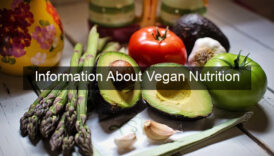What are Gluten-Free Recipes?

- What are Gluten-Free Recipes?
- What are Gluten-Free Recipes?
- Exploring Gluten-Free Grains and Flours
- Understanding Gluten-Free Alternatives
- Baking Delicious Gluten-Free Bread
- Creating Flavorful Gluten-Free Pasta Dishes
- Navigating a Gluten-Free Lifestyle
- Dining Out Gluten-Free
- Reading Food Labels Carefully
- Gluten-Free Meal Planning
- Conclusion
- Frequently Asked Questions (FAQs)

What are Gluten-Free Recipes?
Imagine biting into a warm, crusty loaf of bread or savoring a perfectly cooked pasta dish, but without the worry of digestive upset. This is the promise of gluten-free recipes. For those with celiac disease, gluten sensitivity, or those simply choosing to avoid gluten, these recipes offer a pathway to enjoying delicious and satisfying meals without compromising their health or well-being. Gluten-free cooking isn’t about restriction; it’s about exploration and discovery. It’s about learning to use alternative ingredients and techniques to create dishes that are just as flavorful, if not more so, than their gluten-containing counterparts. This journey into gluten-free cuisine opens up a world of exciting possibilities, from naturally gluten-free grains like quinoa and rice to innovative flour blends that mimic the texture and taste of traditional wheat flour. Embracing a gluten-free lifestyle doesn’t mean sacrificing taste or enjoyment; it means embracing a new way of cooking and eating that prioritizes both health and flavor.
Exploring Gluten-Free Grains and Flours
Understanding Gluten-Free Alternatives
Navigating the world of gluten-free grains and flours can feel overwhelming at first, but it’s a rewarding endeavor. Many naturally gluten-free options provide unique flavors and textures to enhance your cooking. Rice flour, for example, offers a light and delicate texture perfect for cakes and pastries. Almond flour lends a nutty richness to baked goods, while coconut flour adds a subtly sweet and tropical touch. Experimenting with these different flours opens up a world of culinary possibilities.
Beyond single-grain flours, gluten-free all-purpose blends are readily available, offering convenience and versatility. These blends often combine several different flours and starches to mimic the properties of wheat flour, making them suitable for a wide range of recipes. When choosing a blend, consider the specific application and desired outcome. Some blends are better suited for baking bread, while others excel in pastries or sauces.
Mastering the art of gluten-free baking often involves adjusting recipes and techniques. Gluten plays a crucial role in providing structure and elasticity to dough, so its absence requires careful consideration. Using xanthan gum or guar gum can help bind ingredients and create a more cohesive texture. Additionally, adjusting the liquid content and baking time may be necessary to achieve the desired results.
Baking Delicious Gluten-Free Bread
Baking gluten-free bread presents a unique set of challenges, but the rewards are well worth the effort. Achieving a light and airy loaf requires understanding the properties of gluten-free flours and employing specific techniques. Using a combination of flours, such as rice flour, tapioca starch, and potato starch, can help create a more balanced texture.
Adding ingredients like psyllium husk powder or flaxseed meal can improve the structure and rise of gluten-free bread. These ingredients act as binding agents and help mimic the elasticity of gluten. Experimenting with different combinations and ratios can lead to a perfectly textured loaf.
Proper proofing and baking techniques are essential for successful gluten-free bread. Allowing the dough to rise in a warm, humid environment can help develop flavor and texture. Baking in a preheated oven at the correct temperature ensures even cooking and a golden crust.
Creating Flavorful Gluten-Free Pasta Dishes
Gluten-free pasta has come a long way, offering a variety of shapes and textures that rival traditional pasta. Made from ingredients like rice, corn, quinoa, or lentils, these pastas provide a satisfying base for countless dishes.
When cooking gluten-free pasta, it’s important to follow the package instructions carefully. Different brands and types of pasta may require different cooking times and methods. Be mindful not to overcook the pasta, as it can become mushy.
Pairing gluten-free pasta with flavorful sauces and toppings enhances the overall dining experience. From classic tomato sauces to creamy pesto or vibrant vegetable-based sauces, the possibilities are endless. Adding fresh herbs, spices, and protein elevates the dish to a new level.
Navigating a Gluten-Free Lifestyle
Dining Out Gluten-Free
Dining out on a gluten-free diet requires careful planning and communication. Researching restaurants beforehand and contacting them to inquire about their gluten-free options can ensure a smooth dining experience. Many restaurants now offer dedicated gluten-free menus or are knowledgeable about cross-contamination risks.
When ordering, clearly communicate your dietary restrictions to the server and emphasize the importance of avoiding cross-contamination. Asking about preparation methods and ingredients can help minimize the risk of accidental gluten exposure.
Choosing dishes that are naturally gluten-free, such as grilled meats, steamed vegetables, or salads, can minimize the risk of cross-contamination. Be cautious of sauces, marinades, and dressings, as they may contain hidden gluten.
Reading Food Labels Carefully
Becoming a savvy label reader is crucial for anyone following a gluten-free diet. Carefully scrutinizing food labels helps identify hidden sources of gluten that may not be immediately apparent.
Look for certified gluten-free labels, which indicate that the product has been tested and meets specific standards for gluten content. Be aware that even products labeled “wheat-free” may still contain gluten from other sources.
Familiarize yourself with common gluten-containing ingredients and their various names. This knowledge empowers you to make informed choices and avoid accidental gluten ingestion.
Gluten-Free Meal Planning
Effective meal planning simplifies a gluten-free lifestyle and ensures a variety of nutritious and delicious meals. Planning ahead allows you to stock up on essential ingredients and create a balanced weekly menu.
Designating specific days for grocery shopping and meal preparation streamlines the process and reduces stress. Preparing gluten-free meals in advance saves time and ensures healthy options are readily available.
Creating a repertoire of go-to gluten-free recipes simplifies meal planning and provides a foundation for culinary exploration. Experimenting with new recipes and flavors keeps meals exciting and prevents dietary monotony.
Conclusion
Embarking on a gluten-free journey is a transformative experience that opens up a world of culinary possibilities. By understanding the nuances of gluten-free ingredients and techniques, you can create delicious and satisfying meals that cater to your dietary needs. From exploring ancient grains to mastering the art of gluten-free baking, this journey is an opportunity to expand your culinary horizons and embrace a healthier lifestyle. With careful planning, mindful label reading, and a willingness to experiment, you can navigate the gluten-free world with confidence and enjoy a diverse and flavorful diet.
Remember, gluten-free cooking is not about deprivation; it’s about discovery. It’s about finding new ways to enjoy your favorite foods and create new culinary masterpieces. So, embrace the challenge, explore the possibilities, and savor the delicious rewards of a gluten-free lifestyle.
Frequently Asked Questions (FAQs)
- What is gluten?
- What is celiac disease?
- What are the symptoms of gluten sensitivity?
- What are some common gluten-free grains?
- Where can I find gluten-free recipes?
- How do I avoid cross-contamination when cooking gluten-free?
- Is a gluten-free diet healthy?
Gluten is a protein found in wheat, barley, and rye.
Celiac disease is an autoimmune disorder triggered by gluten consumption.
Symptoms can include digestive issues, fatigue, and skin problems.
Rice, quinoa, corn, and oats (certified gluten-free) are common alternatives.
Numerous online resources, cookbooks, and blogs offer a wealth of gluten-free recipes.
Use separate cutting boards, utensils, and cooking surfaces.
A balanced gluten-free diet can be healthy, but it’s important to ensure adequate nutrient intake.
| Gluten-Free Grain | Use |
|---|---|
| Rice Flour | Cakes, pastries |
| Almond Flour | Baked goods |
| Quinoa | Salads, side dishes |



